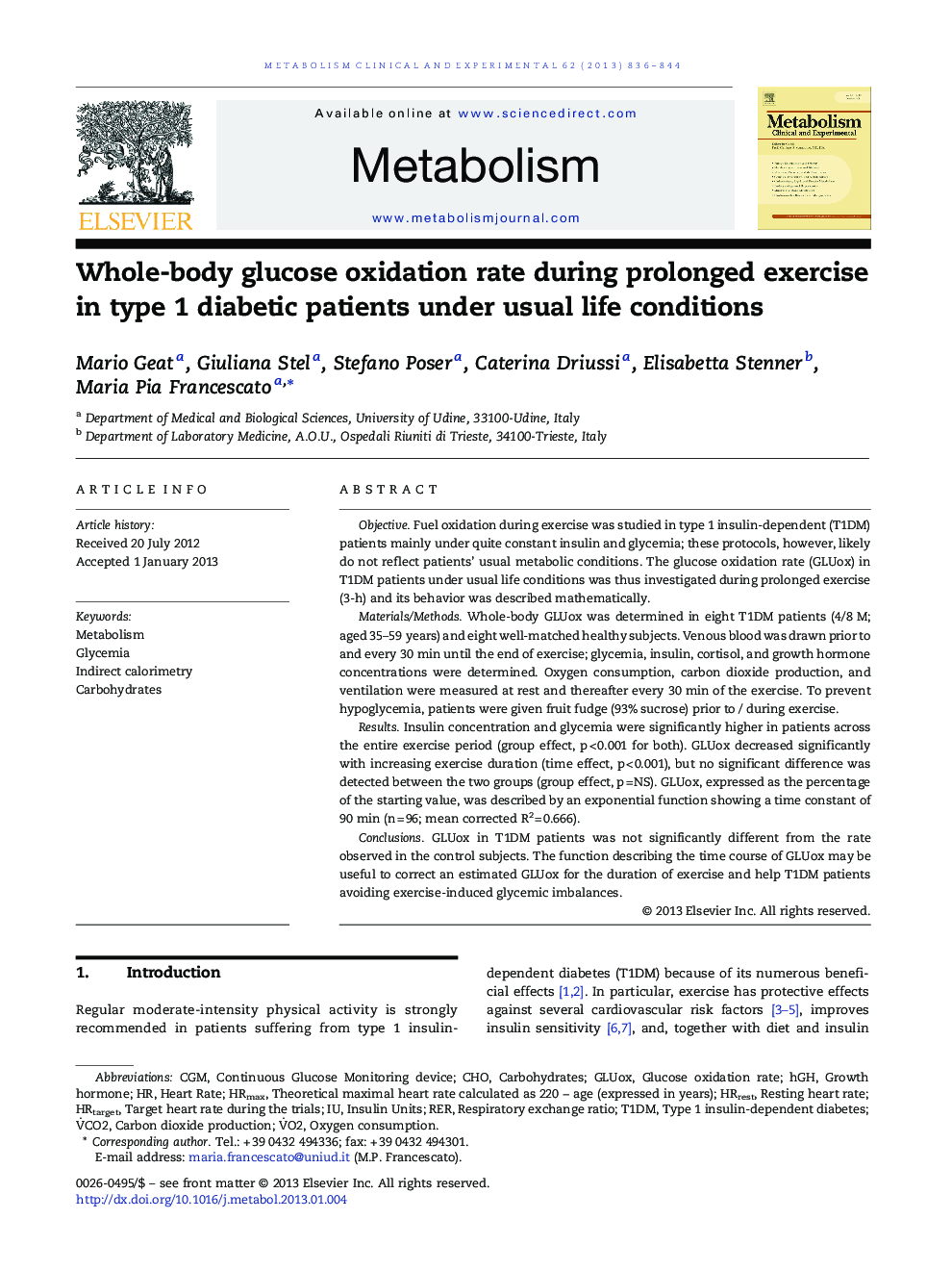| Article ID | Journal | Published Year | Pages | File Type |
|---|---|---|---|---|
| 2805527 | Metabolism | 2013 | 9 Pages |
ObjectiveFuel oxidation during exercise was studied in type 1 insulin-dependent (T1DM) patients mainly under quite constant insulin and glycemia; these protocols, however, likely do not reflect patients’ usual metabolic conditions. The glucose oxidation rate (GLUox) in T1DM patients under usual life conditions was thus investigated during prolonged exercise (3-h) and its behavior was described mathematically.Materials/MethodsWhole-body GLUox was determined in eight T1DM patients (4/8 M; aged 35–59 years) and eight well-matched healthy subjects. Venous blood was drawn prior to and every 30 min until the end of exercise; glycemia, insulin, cortisol, and growth hormone concentrations were determined. Oxygen consumption, carbon dioxide production, and ventilation were measured at rest and thereafter every 30 min of the exercise. To prevent hypoglycemia, patients were given fruit fudge (93% sucrose) prior to / during exercise.ResultsInsulin concentration and glycemia were significantly higher in patients across the entire exercise period (group effect, p < 0.001 for both). GLUox decreased significantly with increasing exercise duration (time effect, p < 0.001), but no significant difference was detected between the two groups (group effect, p = NS). GLUox, expressed as the percentage of the starting value, was described by an exponential function showing a time constant of 90 min (n = 96; mean corrected R2 = 0.666).ConclusionsGLUox in T1DM patients was not significantly different from the rate observed in the control subjects. The function describing the time course of GLUox may be useful to correct an estimated GLUox for the duration of exercise and help T1DM patients avoiding exercise-induced glycemic imbalances.
